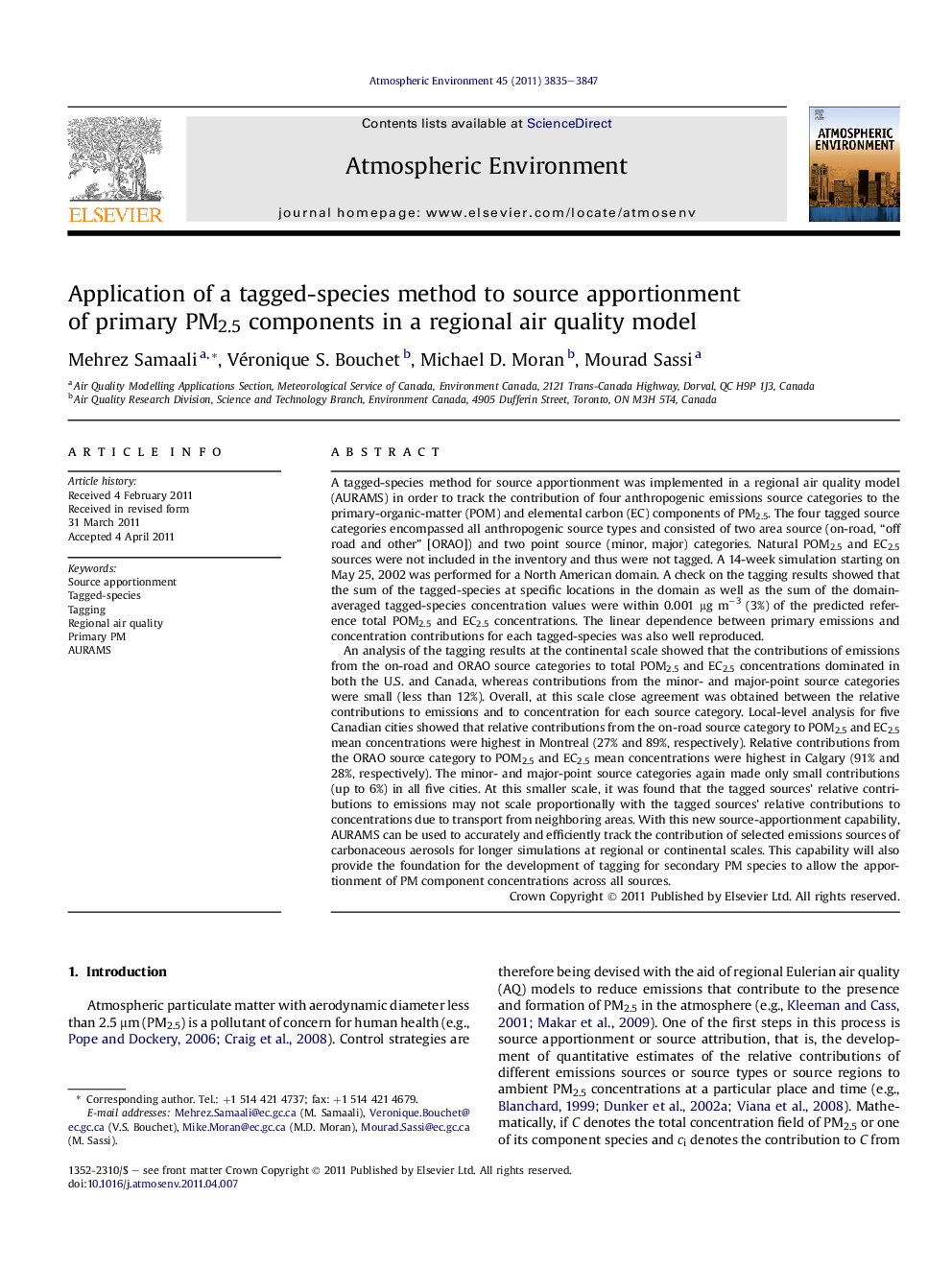| کد مقاله | کد نشریه | سال انتشار | مقاله انگلیسی | نسخه تمام متن |
|---|---|---|---|---|
| 4439693 | 1311029 | 2011 | 13 صفحه PDF | دانلود رایگان |

A tagged-species method for source apportionment was implemented in a regional air quality model (AURAMS) in order to track the contribution of four anthropogenic emissions source categories to the primary-organic-matter (POM) and elemental carbon (EC) components of PM2.5. The four tagged source categories encompassed all anthropogenic source types and consisted of two area source (on-road, “off road and other” [ORAO]) and two point source (minor, major) categories. Natural POM2.5 and EC2.5 sources were not included in the inventory and thus were not tagged. A 14-week simulation starting on May 25, 2002 was performed for a North American domain. A check on the tagging results showed that the sum of the tagged-species at specific locations in the domain as well as the sum of the domain-averaged tagged-species concentration values were within 0.001 μg m−3 (3%) of the predicted reference total POM2.5 and EC2.5 concentrations. The linear dependence between primary emissions and concentration contributions for each tagged-species was also well reproduced.An analysis of the tagging results at the continental scale showed that the contributions of emissions from the on-road and ORAO source categories to total POM2.5 and EC2.5 concentrations dominated in both the U.S. and Canada, whereas contributions from the minor- and major-point source categories were small (less than 12%). Overall, at this scale close agreement was obtained between the relative contributions to emissions and to concentration for each source category. Local-level analysis for five Canadian cities showed that relative contributions from the on-road source category to POM2.5 and EC2.5 mean concentrations were highest in Montreal (27% and 89%, respectively). Relative contributions from the ORAO source category to POM2.5 and EC2.5 mean concentrations were highest in Calgary (91% and 28%, respectively). The minor- and major-point source categories again made only small contributions (up to 6%) in all five cities. At this smaller scale, it was found that the tagged sources’ relative contributions to emissions may not scale proportionally with the tagged sources’ relative contributions to concentrations due to transport from neighboring areas. With this new source-apportionment capability, AURAMS can be used to accurately and efficiently track the contribution of selected emissions sources of carbonaceous aerosols for longer simulations at regional or continental scales. This capability will also provide the foundation for the development of tagging for secondary PM species to allow the apportionment of PM component concentrations across all sources.
► We implement a new tagging capacity in the AURAMS regional AQ modeling system.
► The accuracy of the tagging method has been checked for EC and POM species.
► Emission trends from the tagged source categories explain well concentration trends.
► Local and long-range contributions to EC and POM are shown for five Canadian cities.
► Contributions from various source categories can be tracked with this method.
Journal: Atmospheric Environment - Volume 45, Issue 23, July 2011, Pages 3835–3847